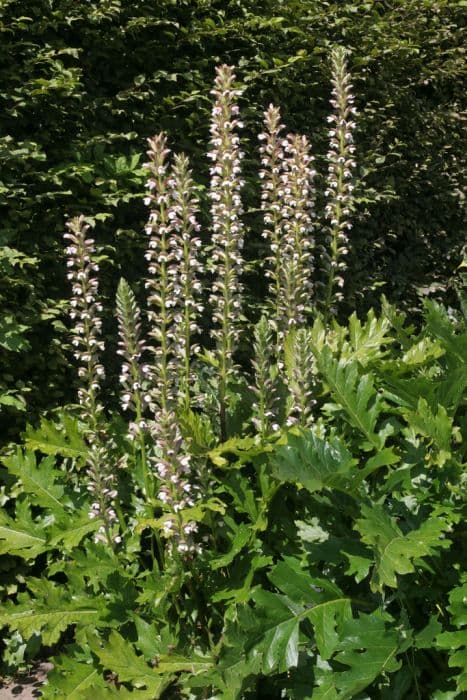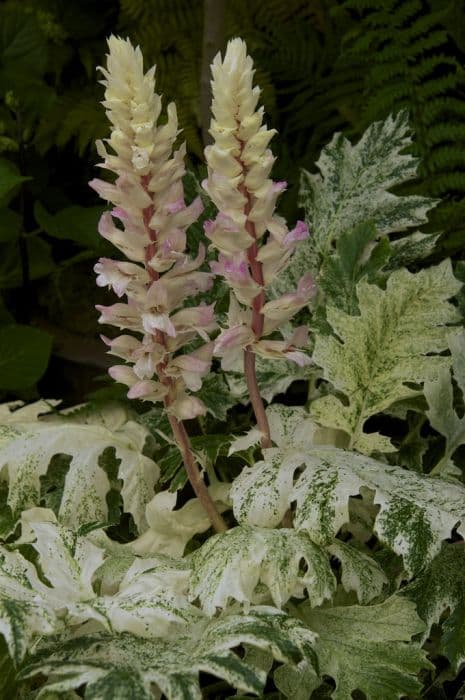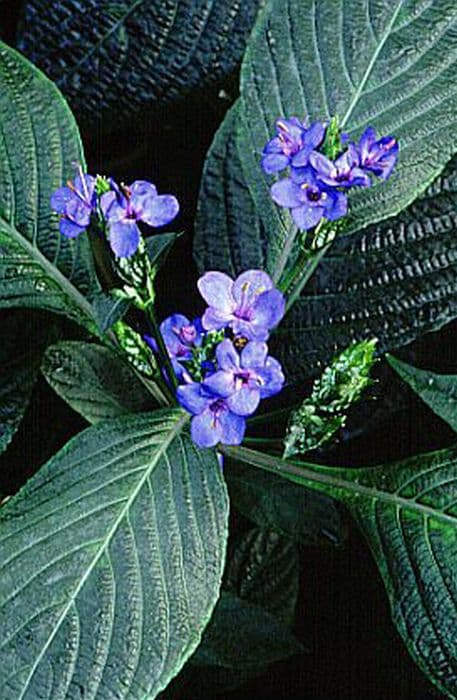Black-eyed Susan vine Thunbergia alata

ABOUT
The plant known as Black-eyed Susan vine is a visually striking ornamental species recognizable by its glossy, arrow-shaped leaves and lush vines. It features charming flowers with a distinct appearance owing to their bright orange, yellow, or white petals which surround a dark, eye-catching center reminiscent of a black eye, hence the name. These blooms resemble a miniature sunflower or daisy in shape and present a vibrant contrast against the green foliage. The vines exhibit a twining nature, gracefully wrapping around supports and creating an alluring display as they spread. The Black-eyed Susan vine is beloved in gardens and can be often seen adorning trellises, fences, and walls, where it adds a burst of color and a tropical feel.
About this plant
 Names
NamesSynonyms
Black-Eyed Susan Vine, Clock Vine, Black-Eyed Susan, Black-Eyed Susanvine
Common names
Endodeca alata, Meyenia alata, Meyenia erecta, Thunbergia erecta, Thunbergia laurifolia, Thunbergia manganjensis, Thunbergia picta.
 Toxicity
ToxicityTo humans
Thunbergia alata, commonly known as Black-eyed Susan vine, is not known to be toxic to humans. There is limited information on its toxicity, but it is generally not regarded as a poisonous plant and is often grown in gardens for ornamental purposes. However, as with any plant, individual allergic reactions or sensitivities are possible. Ingesting any part of the plant is not advisable, and if ingestion does occur and leads to adverse symptoms, medical attention should be sought.
To pets
Thunbergia alata, common name Black-eyed Susan vine, is not known to be toxic to pets. There is little information suggesting that this plant poses a significant risk if ingested by pets such as dogs or cats. However, it is always best to prevent pets from consuming plants as a general safety precaution. In rare cases, ingestion might cause mild gastrointestinal upset, but serious poisoning symptoms are not commonly reported. If unusual signs are observed after a pet has ingested parts of the plant, it is wise to consult a veterinarian.
 Characteristics
CharacteristicsLife cycle
Annuals
Foliage type
Evergreen
Color of leaves
Green
Flower color
Varies
Height
6-8 feet (1.8-2.4 meters)
Spread
3-6 feet (0.9-1.8 meters)
Plant type
Climber
Hardiness zones
9
Native area
East Africa
Benefits
 General Benefits
General Benefits- Aesthetic Appeal: Thunbergia alata, commonly known as Black-eyed Susan vine, offers vibrant flowers that can enhance the visual appeal of gardens and living spaces.
- Fast Growth: This plant is known for its rapid growth, quickly covering trellises, fences, and arbors to provide lush greenery and colorful blooms.
- Easy to Cultivate: Black-eyed Susan vine is relatively easy to grow and maintain, making it suitable for gardeners of all skill levels.
- Attracts Pollinators: The nectar-rich flowers are attractive to bees, butterflies, and hummingbirds, promoting biodiversity in the garden.
- Versatility in Usage: It can be grown in containers, hanging baskets, or as a ground cover, providing various landscaping options.
- Screening and Privacy: Its dense foliage can be used to create a natural privacy screen or to hide unsightly areas in the garden.
- Seasonal Interest: Black-eyed Susan vine blooms from early summer to autumn, providing long-lasting color and interest throughout the growing season.
 Medical Properties
Medical PropertiesThis plant is not used for medical purposes.
 Air-purifying Qualities
Air-purifying QualitiesThis plant is not specifically known for air purifying qualities.
 Other Uses
Other Uses- Black-Eyed Susan vine can be used as a natural privacy screen when grown over fences and lattice due to its dense foliage and climbing habit.
- The plant can be cultivated indoors in hanging baskets to add aesthetic appeal with its cascading vines and vibrant flowers.
- Thunbergia alata is effective in butterfly gardens, attracting various species with its nectar-rich blossoms.
- The vines can be trained to grow over pergolas or arbors, providing a natural, living canopy that offers shade and visual interest.
- Black-Eyed Susan vine's rapid growth makes it suitable for use in school projects or educational programs that focus on plant development and life cycles.
- When utilized in outdoor eating areas, Thunbergia alata can create a pleasant ambiance with its colorful flowers and lush foliage.
- The plant can be used in theatrical productions or photo shoots to create tropical or jungle-themed set designs.
- Thunbergia alata may be employed in crafting, specifically in the creation of natural wreaths or as a fresh decorative element in floral arrangements.
- In regions where it is non-invasive, the Black-Eyed Susan vine can be used to cover unsightly structures like utility boxes or old sheds.
- The plant's ability to climb and cover quickly makes it an ideal candidate for theme parks or resorts that require fast-growing greenery to enhance the guest experience.
Interesting Facts
 Feng Shui
Feng ShuiBlack-eyed Susan vine is not used in Feng Shui practice.
 Zodiac Sign Compitability
Zodiac Sign CompitabilityBlack-eyed Susan vine is not used in astrology practice.
 Plant Symbolism
Plant Symbolism- Aspiration: Thunbergia alata, commonly known as Black-Eyed Susan vine, often symbolizes a sense of aspiration due to its climbing nature, always reaching upwards towards the light.
- Encouragement: The bright flowers of the Black-Eyed Susan vine are thought to represent encouragement, making them a great gift to give someone who is going through a challenging time.
- Optimism: With its lush foliage and cheerful, sunny flowers, Black-Eyed Susan vine embodies optimism and positive thoughts, often reminding people to look at the brighter side of life.
- Friendship: The warming colors of the Black-Eyed Susan vine's blooms are often associated with the warmth and support of friendship, symbolizing strong and affectionate bonds between people.
 Water
WaterBlack-eyed Susan vine (Thunbergia alata) should be watered regularly, maintaining moist but not waterlogged soil. In general, provide about 1 inch of water weekly, but adjust based on weather conditions—more during hot, dry spells and less when it’s cool or rainy. Ensure that the water reaches the root zone by watering deeply and slowly. It's better to water this plant in the morning to reduce evaporation and allow the foliage to dry out during the day, reducing the risk of fungal diseases. During winter, when growth slows, reduce watering frequency to when the top inch of soil feels dry to the touch.
 Light
LightBlack-eyed Susan vine thrives in bright, indirect sunlight and should be placed in a location where it receives this type of light for the majority of the day. Direct morning light can be beneficial, but avoid strong, direct afternoon sun, which can scorch the leaves. A spot near an east-facing window that offers some shade from the harshest rays in the afternoon is ideal for this plant.
 Temperature
TemperatureThe Black-eyed Susan vine prefers warm conditions and fares best in temperatures between 60 and 70 degrees Fahrenheit. It can withstand minimum temperatures of around 50 degrees Fahrenheit but will suffer if exposed to temperatures below that. It’s not frost-tolerant, and the ideal growing conditions include consistently warm temperatures without drastic fluctuations.
 Pruning
PruningPrune Black-eyed Susan vine to encourage bushier growth, remove dead or damaged vines, and keep the plant looking tidy. Pruning is best done in early spring before new growth begins. Cut back the previous year's growth to a set of strong buds. It's not necessary to prune this vine too frequently; once a year is sufficient, unless you need to shape the plant or manage its size more actively.
 Cleaning
CleaningAs needed
 Soil
SoilBlack-eyed Susan vine thrives in a well-draining, loamy soil mix with a pH of 6.0 to 7.5. A good recipe is to blend two parts peat moss or coconut coir with one part perlite or sand to ensure proper drainage. This mix maintains moisture while allowing excess water to drain away, preventing root rot.
 Repotting
RepottingThe Black-eyed Susan vine should be repotted every 1-2 years or when it has outgrown its current pot. It's best to repot in the spring, just before the growing season begins, to minimize stress and allow the plant to establish in its new container.
 Humidity & Misting
Humidity & MistingBlack-eyed Susan vine prefers a moderate to high humidity level, ranging from 40% to 60%. To maintain these levels, especially indoors, consider using a humidifier or placing the plant on a water-filled pebble tray to increase the ambient humidity.
 Suitable locations
Suitable locationsIndoor
Place in bright, indirect light, keep soil moist.
Outdoor
Full sun to partial shade; shelter from strong winds.
Hardiness zone
10-11 USDA
 Life cycle
Life cycleBlack-eyed Susan vine (Thunbergia alata) begins its life as a seed, which upon germination, grows roots and a shoot that emerges from the soil. The plant enters a vegetative stage where it develops a climbing or trailing stem, heart-shaped leaves, and begins to form buds. It enters the flowering stage, where vibrant yellow-orange flowers with a characteristic dark center bloom, attracting pollinators for sexual reproduction. After pollination, the flowers develop into fruit capsules containing seeds. Once mature, these seeds are dispersed by gravity, wind, or other means, and they enter a period of dormancy until conditions are favorable for the next germination cycle. This perennial or annual plant may die back in colder climates after seed set or can be cultivated indoors or in warm climates for multiple seasons.
 Propogation
PropogationPropogation time
Spring to Summer
The most popular method of propagating Black-eyed Susan vine, Thunbergia alata, is through seed. Seeds can be sown in early spring under cover or in a warm indoor environment to ensure the soil temperatures are adequately warm, about 70-75°F (21-24°C). Seeds should be lightly covered with soil and kept moist until germination, which usually takes about 7-14 days. Once the seedlings have developed a couple of sets of true leaves, they can be hardened off by gradually exposing them to outdoor conditions over a week, before transplanting them outside after all danger of frost has passed. This approach allows for a wide variety of cultivars to be easily and economically propagated.
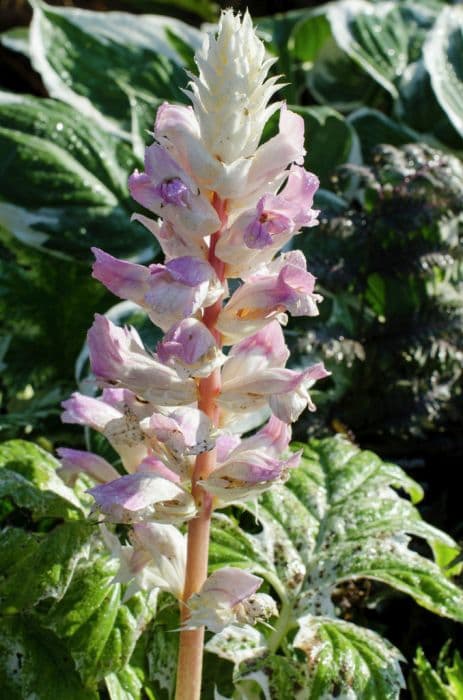
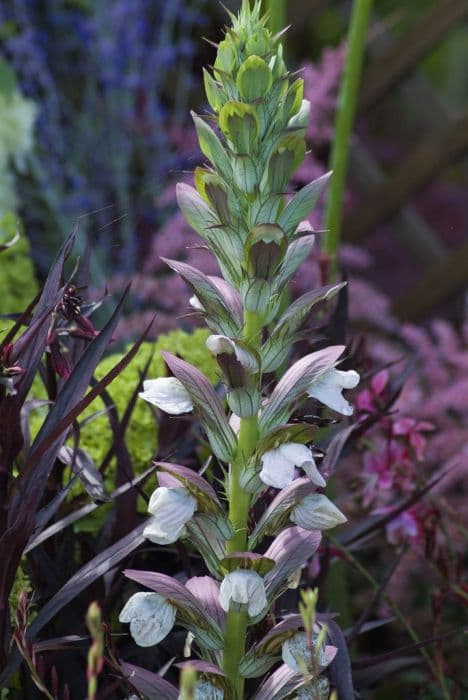


![Black-eyed Susan [Sunny Suzy Red-Orange]](/_next/image?url=https%3A%2F%2Fplants-admin.emdemapps.com%2Fimages%2Fplants%2F%2Fimages%2F607ea5891ee3f.jpg&w=640&q=75)
